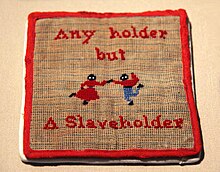It's 1945.
The War is winding down.
On the home front, things have gotten a little shabby thanks to rationing.
What to do?
Why not crochet some cute and colorful potholders?
Thanks to archeologists, knitting, embroidery, and weaving have been dated to far back in history. When and where crocheting originated isn't known. The "American crochet expert and world traveler Annie Potter says, "The modem art of true crochet as we know it today was developed during the 16th century. It became known as 'crochet lace' in France and 'chain lace' in England."
The Danish writer/researcher, Lis Paludan has offered three theories. "One: Crochet originated in Arabia, spread eastward to Tibet and westward to Spain, from where it followed the Arab trade routes to other Mediterranean countries. Two: It came from South America, where a primitive tribe was said to have used crochet adornments in rites of puberty. Three: In ancient China, women crocheted three-dimensional dolls.
Others date it to the 1500s when nuns in Italy crocheted church textiles.
What we do know is:
One: whole families crocheted items to sell and support themselves during the Irish Potato Famine.
Two: Queen Victoria crocheted. In fact during the Victorian era women were crocheting "flowerpot holders, bird cage covers, baskets for visiting cards, lamp mats and shades, wastepaper baskets, tablecloths, antimacassars (or "antis," covers to protect chair backs from the hair oil worn by the men in the mid- 1800s), tobacco pouches, purses, men's caps and waistcoats, even a rug with foot warmers to be placed under the card table for card players."
Three: During World War I, crocheted items for the war effort were limited to blankets, mufflers, scarves, hospital stockings, wristlets, Baklavas, mine sweeper gloves, knitting bags, and making knitting needle point protectors by crocheting over rifle shells. Crocheting was not being discriminated against; It's simply that knitting uses less yarn--helpful during times of rationing.
Once yarn became available, women started crocheting afghans, slumber rugs, traveling rugs, chaise lounge rugs, sleigh rugs, car rugs, cushions, coffee- and teapot cozies and hot-water bottle covers. According to www.crocheters.org, "It was during this time that potholders made their first appearance and became a staple of the crocheter's repertoire."
During World War II, things hadn't changed much. The American Red Cross provided a pattern for a circular shawl for female refugees.An Australian Red Cross Society Knitting Book included a pattern for crocheted Bed Socks, and one in Canada promoted crocheted baby clothes. Instructions for crocheting a helmet that resembled a ski mask were included in he booklet, Pointers for Crocheting and Knitting.
However, after World War II, from the late 1940s until the early 1960s, "there was a resurgence in interest in home crafts, particularly in the United States, with many new and imaginative crochet designs published for colorful doilies and potholders." I'm thinking of seeking out the little dresses and stringing them to make a curtain in my mud room.
FURTHER COMMENTS
To me, the above website quote is questionable. Here's why:
 |
| Made to express sentiments during the Civil War. Wikipedia says the first homemade pot holders were appeared at Antislavery bazaars.
|
 |
| Interned Japanese men crocheted to pass the time during World War II
And apropos to nothing, Pot-holders have been banned from commercial kitchens in New Zealand.
The Bong, another kind of pot holder, was used by tribal chiefs in parts of Russia 2,400 years ago.
|















No comments:
Post a Comment
Comments are now live if we don't have a lot of spam they'll stay live, if we do they'll close again so spammers don't waste our time or yours